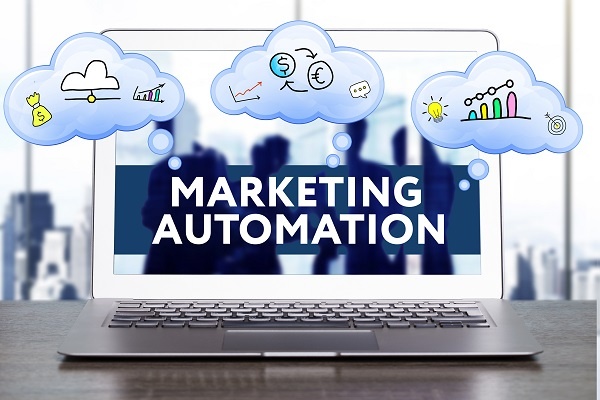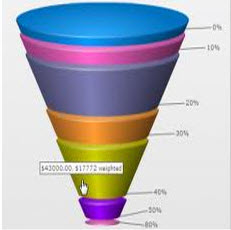
by Francois Muscat | Apr 9, 2018 | Lead Generation
Marketing automation is a tool that automates and measures all your digital marketing tasks. You can think of marketing automation as a handy digital robot that takes on all the tedious tasks that you generally procrastinate to do.
- Essentially, a marketing automation tool will market everything from your email marketing and lead capturing to your lead scoring. It can even automate your social media campaigns. Marketing automation supports lead generation by following and capturing a potential customer’s initial interactions with your company.
An example would be having a prospect convert into a lead on a landing page. In this case, a marketing automation tool will pick up what page your prospect visited and group the prospect into a specific category. That way, when your sales team picks up the lead, they will know what information, product or service the potential customer was interested in when they visited your site. This can help them tailor their pitch or it can help you with your content marketing strategy by giving you the insights you need to help them further down the sales funnel.
- Marketing automation tools can also rate and score your leads based on certain criteria. The automation process can be taken a step further by automatically sending the client a follow-up email with further information based on the touch-point they had with your business.
If you want to get more qualified leads this year, then a solid digital marketing strategy and marketing automation process can help you in profound ways. Contact WSI OMS for more information about marketing automation and lead generation today.

by Marelise da Silva | Jan 6, 2016 | Lead Generation, Social Media Marketing
These days if you ask any digital marketing expert for advice on advertising, he or she will immediately start talking about why you should get into social media marketing. However, actually getting sales leads from social media marketing often leaves these people flustered.
One type of content marketing strategy which has proven its worth is the personality quiz. In fact, of the top five publishers on Facebook, three are well-known for their quizzes. However, if you want to make the most of this email marketing, mobile marketing and all round content marketing strategy you need to know what you are doing.
Decide what the quiz should be about
Before even starting to think about the questions, you need figure out what your strategy is. You can either go with an event based quiz, where you base your questions on a particular event, for example ‘What is your Christmas personality?” You can also create a quiz based on the main function of your business, for instance, if you are a builder it could be “What is your dream home?”
How to phrase the questions
This is where you will be setting yourself apart from the rest. This is where you have the opportunity to speak to each of your potential customers. Here are three tips to make this work for you:
Write with flair – in this case it really helps to use personal pronouns as it will make your readers feel as though you are speaking directly to them. This is a whole lot better than making him or her feel like a number and produces results.
Use pictures – the internet has shorted everyone’s attention span. Images break the wording up and make the quiz feel as though it is more like a game. This helps people lower their guard making them more inclined to buy in later.
Keep it to about eight questions – this is your perfect number. It gives you enough time to build a relationship with your quiz takers. It is also short enough to hold their attention. This is the number you want.
Now that you know how to turn this digital marketing strategy into one that brings in cash, why not go and see what you can do for your business?

by Francois Muscat | Mar 1, 2012 | Articles, Lead Generation, Online Marketing, Social Media Marketing
Last year I made a commitment to myself – looking for a new career. I decided that I will focus on speaking, training and consulting in the Digital space.
I joined the Professional Speakers Association of South Africa in October and started volunteering to speak at every opportunity. Being a speaker can be hard work and I have already learned from some of South Africa’s greatest speakers, like Stef Du Plessis. He presented a couple of months ago and the one-thing he said that stuck in my mind was “80% of the time, speakers speak for nothing, and 20% of the time they get paid”. He went on to say that the 80% is the experience that you earn as a speaker. He also said “speak whenever you can, even at old age home, as practice is most important.” So Here I go earning my 80% experience as quick as possible.
On 13 March, The PSASA have a arranged a “Fire up Your Business” talk with an impressive line-up of speakers. I am honoured to be on the same stage.
3 Reasons you should attend the Fire Up Your Business Seminar:
- You’ll learn how to instill a positive culture that will truly motivate your staff to greater heights
- You’ll finally really figure out how to harness the power of Web 2.0 to grow your business
- Position yourself as an expert and discover how to become a master influencer in sales & negotiations
Here is the Agenda
Stef du Plessis– How to Motivate Your People and Create a Winning Workplace Culture
Francois Muscat – Leverage the 15 Web 2.0 Dynamics
Douglas Kruger – How to Position Yourself as an Expert in Your Industry
Ian Rheeder – The Neuropsychology of Persuasion
- Do yourself a favour and get the best ideas to supercharge your business
- Its not often that you can attend a great line-up of speakers for just R697.
Book now with Simone Scholtz admin@psasouthernafrica.co.za Cell: 079 680 2573

by Marianna Muscat | Oct 27, 2011 | Lead Generation
In this new digital world marketers have been forced to move beyond the traditional approach to the sales pipeline (awareness, interest, demand, action) and the more moderated approach (awareness, interest, consideration, purchase) which is outdated. The customer is no longer a passive recipient of information or a sidelined spectator. Today, customers are actively engaged in the buying process.
To create engagement and enhance the customer experience, marketers today use a mix of vehicles, including search engines, customer-generated blogs, reviews, online communities, social networks, broadcast media, and personalisation. Therefore, how we approach, define, and use the pipeline must also change.
When developing, implementing, and measuring Marketing’s contribution to the opportunity pipeline, consider the following six revised key measurable stages, which reflect today’s environment: These labels differ from the traditional approach as they are behavioral, which makes it easier to define which behaviors for each measurable stage you want to be able to affect and measure. Together, those steps create the series of behavioral events that many prospects exhibit on their way to becoming and remaining customers.
Let’s examine each stage.
1. Contact
Though awareness is “just fine and dandy,” what really matters is establishing contact. Prospects may be aware of your company and its products and services, but until they demonstrate some degree of interest you may be wasting time and money. Making contact means you need more than a vague idea of the market or customer set; you must have contact information.
2. Connect
Once contact is made, the next thing to do is to connect. What is the difference between a contact and a connection? Contact is an observable signal of ‘hello’ from a customer; A connection is the virtual exchange of a handshake (at least) and the establishment of some type of rapport. Unfortunately, just because you have made the connection doesn’t mean you have a customer.
You want those you’ve connected with to become followers—and download material from your website, sign up for your newsletter, participate in your webinars, etc. That is why the conversation stage is so important.
3. Conversation
Now we’re talking! That’s the best way to describe the conversation stage. Information flows back and forth between prospects/customers and you. Both parties are engaged.
This is the stage where the rubber meets the road and you start to get traction: Once the conversation is in play, the next step is consideration.
4. Consideration
Just because you have a conversation in play with a customer, doesn’t mean you have a qualified opportunity who is seriously considering purchasing from you.
Consideration involves customers’/prospects’ applying careful thought to your offer and company and weighing their options. Different marketing vehicles, such as customer references, case studies, and third-party whitepapers, will be deployed at this stage to help the customer/prospect build preference and predisposition toward your offering.
5. Consumption
Even though the opportunity has now moved to the domain of Sales, Marketing still plays a role in converting the opportunity from consideration to a contract to consume, or an actual consumption of the product or service. And upon consumption, Marketing can measure the overall conversion rate and time, the cost from contact to customer, the cost to acquire, and Marketing’s “win” rate.
6. Community
To stop investing in a relationship that has just begun would be a shame. A customer is your most important asset. Customers are also your most important advocates. In the world of customer-generated content, blogs, social networks, and product reviews, marketing organizations need to focus on developing their customer communities, the final “C” in the pipeline.
You can build a community in numerous ways, including Facebook, LinkedIn, and other social networks that provide a means for your customers to engage with you and one another.
by Marianna Muscat | Mar 22, 2011 | Lead Generation
Like most companies, you have probably built a significant database of prospective customers. It’s not uncommon to have 100,000’s of contacts, or even millions, in a B2B or B2C company’s contact database. That database is a significant asset that gets undervalued at most companies. Think about it: if your average cost per new contact is even just R50 (a low assumption) and you have a modest database of 20,000 contacts, then your company database is a R1 million asset. Do you treat it as such? How many other assets of that size do you have in your company? How much revenue does that asset generate for your business?
Lead Nurturing
The members of your database should be nurtured. Done well, lead nurturing can lead to much more efficient and effective demand generation. When nurturing leads that are not immediately sales ready, these are three times more likely to become a sales lead in a given month than if they are not nurtured. Overall, that means if you can generate 50% more qualified sales leads each month at 33% lower cost per lead.
To help design and implement these processes, here are some key tips to effective lead nurturing:
- Make it valuable — to your prospects, not just you. Each and every lead nurturing interaction needs to be relevant and useful to the recipient. If it’s too promotional or not helpful, then severing the relationship is usually just a delete button or unsubscribe link away.
- Make it bite-sized. The internet has changed how buyers make purchases, and it’s affected how they consume content. Today’s buyers have become accustomed to consuming bite-sized chunks of information in small free periods.
- Match your content to buyer profiles. Prospects find content targeted to their role or industry much more valuable than generic content. According to MarketingSherpa and KnowledgeStorm, 82% of prospects say content targeted to their specific is more valuable and 67% say content targeted to their job function is more valuable.
- Match your content to buying stages. Different types of content will appeal to buyers in different stages of their buying cycle, e.g. awareness vs. research vs. negotiation and purchase. Thought leadership and best practices work best during the awareness stage; comparisons, reviews, and pricing information appeals during the research stage; and information about the company, support, etc. will work best at the purchase stage.
Get the timing right
It’s always difficult to say exactly how often you should send nurturing contacts. One tactic is to let your prospects determine the pace themselves, choosing between once a week or twice a month and a best practice tip here is to work on a 90 day strategy plan.






